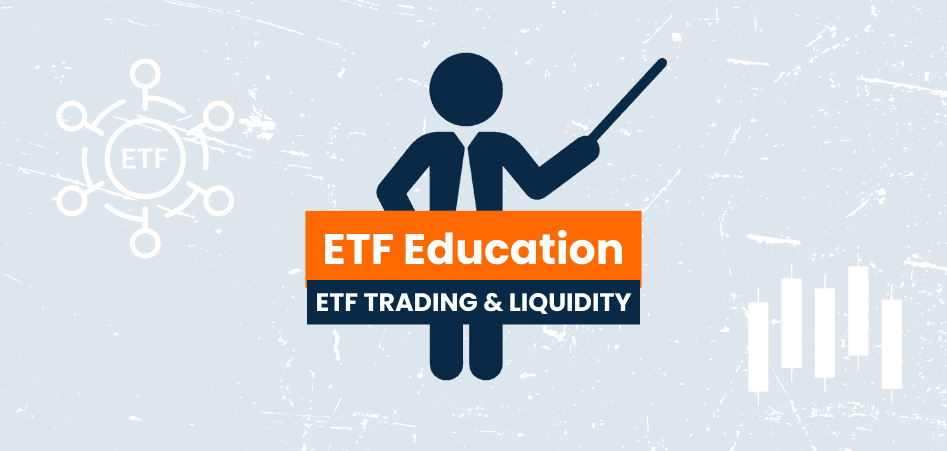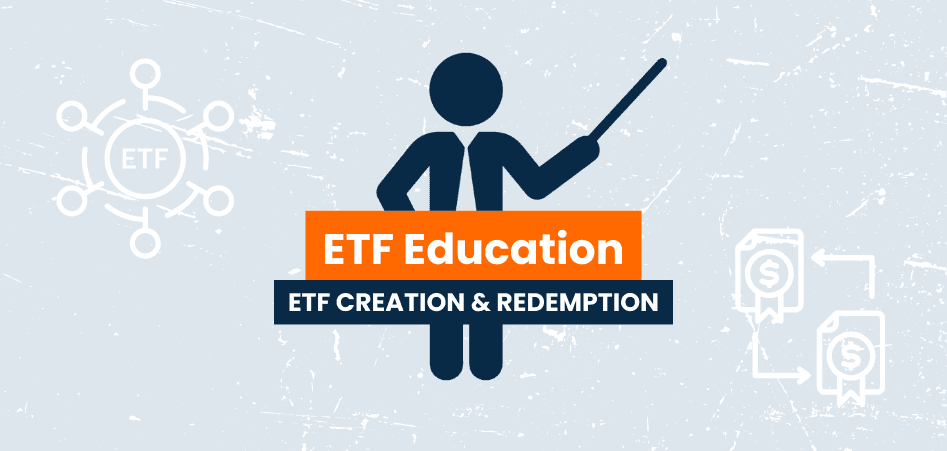ETF Education Center
ETF Education Center
Find answers to foundational ETF questions and access a wealth of resources — for advisors and investors — for continued learning.
What's an ETF?
An Exchange-Traded Fund (ETF) is an investment vehicle that combines characteristics of both mutual funds and stocks. In an ETF, each share represents a basket of securities (like a mutual fund), but trades on an exchange (like a stock).
What types of ETFs exist?
A range of ETFs exist to serve almost every investment need, from broad index funds, to specialized index trackers, to actively managed funds. While the majority of ETFs invest in stocks, others invest in bonds, commodities, currencies, and even alternative strategies (e.g., long-short equity funds and managed futures).
What’s the difference between an active and passive ETF?
Passively managed ETFs attempt to closely track a benchmark or index. This approach involves limited transactions. Actively managed ETFs attempt to outperform a benchmark or index. In this case, fund managers actively trade securities within an ETF to achieve the goal. As a result, active ETFs do tend to have higher management expenses and fees.
Are index ETFs active?
We consider ETFs that track custom indexes to be highly active solutions, delivered to the market through a thematic index ETF.
We believe it would be a mistake to conflate index investing and passive investing. We’d argue that only a small subset of index investing (e.g., traditional market cap betas) is truly passive – everything else is active – whether delivered in an index fund or discretionary product.
What are the potential benefits of ETFs?
ETF investors may only need to pay taxes on capital gains in the year in which they sell their shares. This aspect of ETFs gives investors more control over the timing of their tax bill. However, ETF investors owe taxes on dividends and interest earned over the course of the year. As a result, the ETF tax advantage is less impactful to assets that generate most of their earnings through interest, such as bonds.
What's the difference between an ETF and a mutual fund?
While ETFs and mutual funds are similar in many ways, they differ significantly in how they trade. Mutual fund trades exclusively occur at the end of the trading day, based on the underlying NAV of the fund’s holdings. In contrast, ETFs trade like stocks – they can be bought and sold throughout the trading day, and the price can fluctuate based on supply and demand. As a result, the market price can differ from the NAV.
What’s the transactional difference between an ETF and a mutual fund?
The process for creating and redeeming shares of an ETF creates a distinct difference in buying and selling compared to a mutual fund. Unlike a mutual fund, only authorized participants (APs) may transact directly with an ETF. APs are ordinarily large investment firms that have authorization to deal directly with the fund through a participant agreement with the fund sponsor. The process by which an AP interacts with the ETF is called the creation/redemption process.
APs will generally create and redeem shares "in-kind" with the fund, meaning that they exchange shares, not cash, with the ETF. These cashless transactions are typically not taxable events and help make ETFs relatively tax efficient.
What’s the difference between an ETF and a stock?
A stock is a single share of a company, representing ownership in that particular company. An ETF is a collection of investable assets and securities, which can include stocks. An ETF typically offers greater diversification, lower risk, and less volatility than a stock.
How do you trade an ETF?
ETFs can be bought or sold through a brokerage account using a full range of order types (market, limit, and stop). ETFs can even be traded on margin and shorted.
What are key considerations when trading an ETF?
To fully benefit from the trading flexibility inherent to an ETF, investors should:
- Consider using “limit” orders instead of “market” orders. Limit orders allow the investor to buy a security at no more (or to sell it at no less) than the price specified in the order.
- Seek to avoid trading at either the market open or close. Prices can be volatile, and bid/ask spreads can be at their widest at or near market open or close.
- For larger orders, consider reaching out to your brokerage firm or the ETF issuer for guidance. ETF issuers and brokerage firms have relationships with liquidity providers, who can help facilitate larger trades and provide additional sources of liquidity.
What’s ETF liquidity?
Liquidity is an often-noted benefit of ETFs in comparison to mutual funds. Trading volume is not representative of liquidity. Rather, liquidity refers to how easily shares can be bought and sold without impacting the ETF’s market price. Here are some key liquidity terms to know:
- Liquidity of the primary market (i.e., liquidity of the underlying securities). The ETF creation and redemption process occurs in the primary market between the ETF and an Authorized Participant (AP).
- Liquidity in the secondary market (i.e., liquidity related to the value of the ETF shares traded). Most trading occurs in the secondary market, where investors buy and sell existing ETF shares.
- Implied liquidity is a measure of an ETF’s potential trading volume based on its underlying assets.
- On-screen liquidity is the most visible source of ETF liquidity – literally the trading activity that has occurred on the exchange.
Do ETFs have capacity considerations?
ETFs can’t manage capacity by closing to new investors.
Why did Harbor decide to launch ETFs?
With the continued growth of the ETF market, we saw an opportunity to provide investors with access to solutions to help fill niche gaps in high-performing portfolios – backed by exceptional stewardship. We strategically evolve our product suite with a results-oriented focus.
Why does Harbor focus on actively managed ETFs?
We offer a suite of active ETFs because we feel strongly that, with the right managers, active strategies can enable better outcomes. Coupled with the added benefit of transparency, liquidity, and low fees, we think active ETFs represent a compelling investment opportunity.
Who manages Harbor’s ETFs?
For the majority of our ETFs, we work with a curated lineup of boutique managers from around the globe, each of whom delivers specialized expertise. This “manager of managers” approach affords us the potential ability to offer only what we truly have conviction in and believe will deliver results.
Where can I learn more about Harbor’s ETFs?
Check out Harbor’s lineup of active ETFs, which we continue to strategically evolve, managed by hand-selected and vetted investment teams with differentiated approaches.
Important Information
Investing involves risk, principal loss is possible. Unlike mutual funds, ETFs may trade at a premium or discount to their net asset value.
Shares are bought and sold at market price not net asset value (NAV). Market price returns are based upon the closing composite market price and do not represent the returns you would receive if you traded shares at other times.
ETFs are subject to capital gains tax and taxation of dividend income. However, ETFs are structured in such a manner that taxes are generally minimized for the holder of the ETF. An ETF manager accommodates investment inflows and outflows by creating or redeeming “creation units,” which are baskets of assets. As a result, the investor usually is not exposed to capital gains on any individual security in the underlying portfolio. However, capital gains tax may be incurred by the investor after the ETF is sold.
3904088





